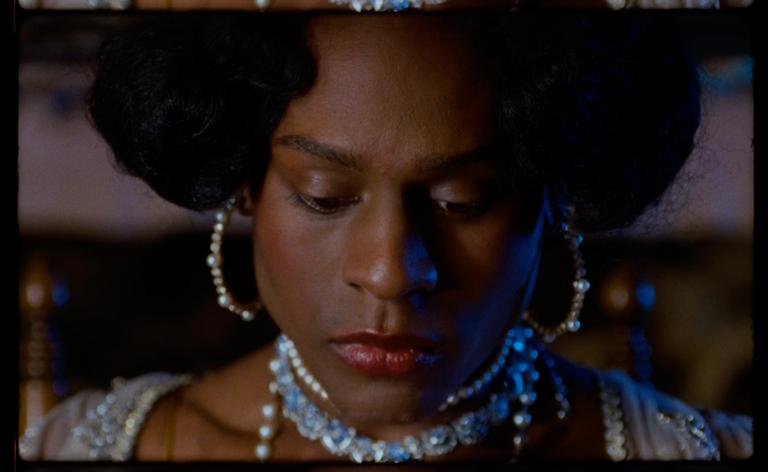
Video Room: Tourmaline Tourmaline
MASP - Museu de Arte de São Paulo Assis Chateaubriand
Avenida Paulista, 1578 – Bela Vista
São Paulo-SP
01310-200
Brésil
MASP - Museu de Arte de São Paulo Assis Chateaubriand presents, from April 26 to June 23, 2024, in the museum’s 2nd basement floor, Video Room: Tourmaline, showing videos by the artist, filmmaker, writer and activist Tourmaline (Roxbury, Massachusetts, USA 1983). Her work sheds light on the cultural manifestations, oppressions and modes of survival of Black, queer and trans communities, rewriting the dominant narratives and histories through references to important figures of queer resistance in the United States, such as Marsha P. Johnson – an activist who is considered an icon of the Stonewall uprising.
Curated by Teo Teotonio, curatorial assistant at MASP, the artist’s debut exhibition in Brazil brings together her works Atlantic is a sea of bones (2017), Happy Birthday, Marsha! (2018) and Salacia (2019). By establishing relationships between fiction and reality, Tourmaline seeks to reformulate established beliefs and initiate a paradigm shift to imagine a future without racial, gender and sexual oppression. “The trilogy explores the past, present and future in settings that are both documentary and dreamlike. By interweaving fact and fiction, Tourmaline critically reimagines narratives that have been erased or neglected, confronting oppression and resilience in an intersectional and poetic approach, where gender, race and class are intrinsically intertwined,” says Teotonio.
In Atlantic is a sea of bones (07'28''), Egyptt LaBeija, activist, performer and godmother of House of LaBeija – the first ballroom in history – interprets herself in a sequence of images that move between reality and dream. In the first scene, LaBeija looks out over one of the piers of the Hudson River through the window of the Whitney Museum of American Art while commenting on her career. Centuries before, the same place had been the point of arrival for enslaved people crossing the Atlantic Ocean from West Central Africa.
Mary Jones – a Black, trans woman and sex worker who lived in New York in the mid-nineteenth century – inspired the audiovisual production Salacia (06'04''). After her arrest in 1836 on charges of theft, Jones became well-known due to the circulation in newspapers of her portrait, captioned The Man Monster. In the film, the artist recreates Jones’ story in Seneca Village – a community of autonomous Black people that existed counter to enslavement, between 1825 and 1857, where Central Park is now located. The production shows the trajectory of an under-recognized personality while reflecting on transphobia and racism.
In Happy Birthday, Marsha! (14'35''), fragments of everyday life take on historical proportions. The video mixes reenactments and real images of Marsha P. Johnson (1945-1992), an activist, performer and reference in the fight for the rights of poor and LGBTQIA+ people. Its conclusion takes place at the beginning of the Stonewall Rebellion, a protest against police violence towards transgender, gay and lesbian people, which became a milestone in the history of community activism, giving rise to LGBTQIA+ Pride Day.
Video Room: Tourmaline is the museum’s second exhibition of 2024, which throughout the year includes audiovisual works by Masi Mamani / Bartolina Xixa, Ventura Profana, Kang Seung Lee and Manauara Clandestina. The Video Room is part of MASP’s annual program dedicated to Queer Histories.